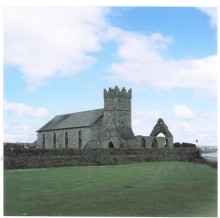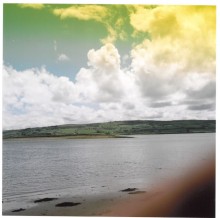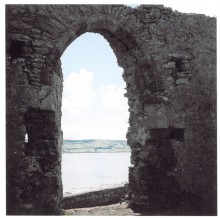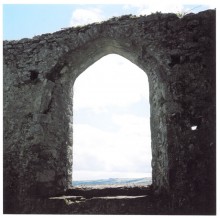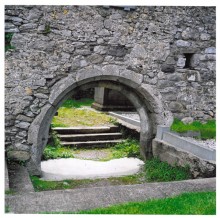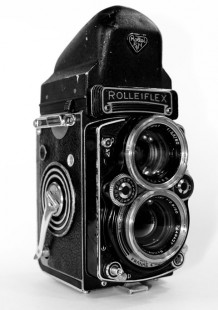Dungarvan is a town on the south coast of Ireland; about fifty miles east of Cork. Abbeyside is a suburb of it. Its parish church is St Augustines.
On 27th and 28th February 2009, I carried out a photographic project there for some clients. While there I felt that an outline of its history could be written and photographs of it taken which might appear in ‘Club Rollei User’ magazine.
On the occasion I was using a 35mm camera, which is not a Rolleiflex and I wasn’t prepared to take shots for our magazine with a camera which isn’t a Rolleiflex.
However, I knew that I’d be in Dungarvan again later and I could bring my Rolleiflex 2.8F then.
On 23rd May, I was photographing clients on the grounds of a church in Dungarvan, in the town centre. When finished I drove a mile or so to the suburban parish of Abbeyside; where the church and abbey already mentioned are.
The name Abbeyside defines the nature of the locality; it’s literally on an abbey at the side of the sea; as some of these photographs show.
The shots were taken with 160ASA.
This Augustian monastery was founded in 1290 by the hermits of that order. The surviving parts consist of the thirteenth century ruin and the fifteenth century tower.
After the suppression of the monasteries in the sixteenth century, the friars were driven from the abbey and lands, and in 1654 the building was destroyed and ruined.
The church, which is attached to the ruin, was built in the 1820s. It was re-constructed in 1890 and also in 1972.
The ruin itself, to the best of my knowledge, had some repair work carried out in 1923 to retain it for other generations who’d take an interest in it.
While it was an abbey, the friars, I expect lived off the land around it; which they would have farmed. They probably also sometimes fished from the sea, which was only yards from them; living off the fish as well.
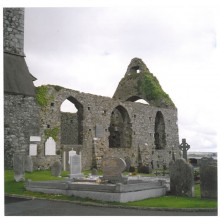
In this and some of the other pictures can be seen square cavities. That’s because when the walls were being built timber scaffolding was erected and timber planks penetrated the cavities. Later when the building was finished the planks were cut to take the scaffolding down but sections of timber remained in the cavities. The timber in these square holes was then covered with plaster. Later, the plaster fell off the timber decayed completely.
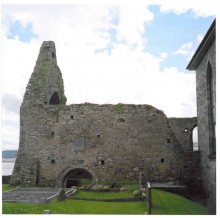
The entrance, seen in this and the next print, is only about 5’-0” high; if that. This would be explained by the fact that people were much smaller than they are today. At the time, the opening probably had a very strong door.
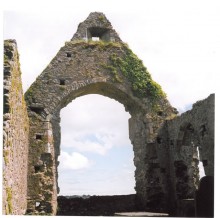
Photographing the interior was quite difficult; trying to get as much as possible into view. The lens on the Rolleiflex 2.8F has an angle of view about an eighth wider than the angle of view on the standard lens of a 35mm camera. By moving back as far as possible I got nearly all of what I wanted into view. Towards the lower right, can be seen the top of a tomb but if I had shown the ground, the top of the building would have been cut off.
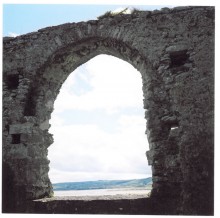
Looking out at the exterior through each of the three small window openings. Once, there were probably beautiful stained glass windows there.
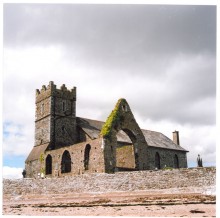
A view from the beach: I expect that the wall was built to protect the ruin and church from erosion. It’s interesting to notice that the church has a chimney
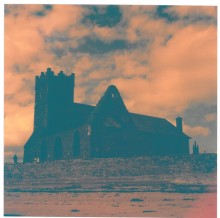
Another view from the beach; to create this effect, I used a Cokin orange filter; which was made for a 35mm camera. I hand held it on front of the lens hood.
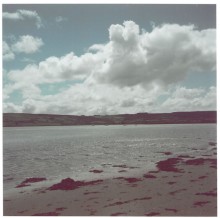
Another view of some of Dungarvan Harbour as seen from the vicinity of the abbey. I used a Cokin green filter, made for a 35mm camera; again it was hand held in front of the lens hood. As the other pictures show, it was a fine summer’s day but the experiment of using this filter, I found interesting; in that it created a cold chill look.
